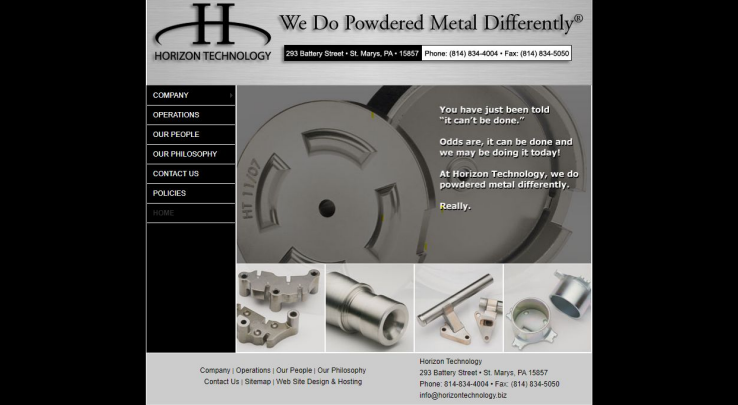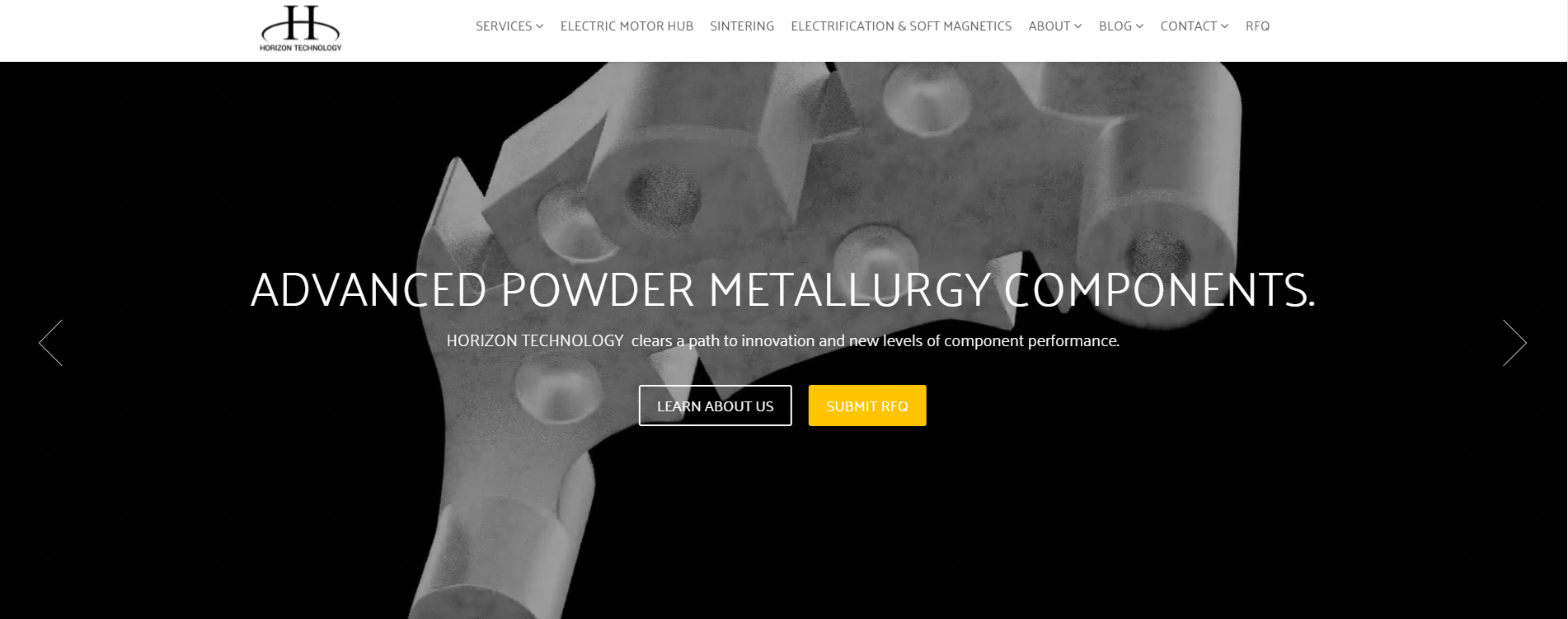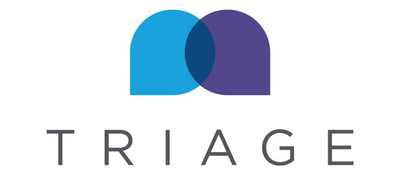Inbound Marketing Blog
for Manufacturers and Healthcare Companies
[EXAMPLES] Inbound Marketing Case Studies That Prove ROI

“Does inbound marketing work?”
Using tools that measure search engine trends, we can tell you at least 70 people Google that phrase (or a similar variation) each month. At least 110 search a form of “inbound marketing ROI” per month.
All that to say … there’s still skepticism around this modern marketing philosophy. This is especially true among leaders at B2Bs, manufacturers, and other industries where trends are slow to catch on.
To prove the value of its methods, tools, and agencies, we’ve compiled three inbound marketing case studies (searched ~70x monthly) below. You’ll find the ROI is clearly worth the minimal risk:
Inbound Marketing Case Study #1: The 'Little' Metal Parts Maker That Could
Summary
- Company: Horizon Technology
- Location: St. Marys, Pa.
- Industry: B2B manufacturing (powder metallurgy)
- Notable challenges: Terrible traffic; industrywide identity crisis
Problem
This super-niche manufacturer was earning a few dozen views a month on its website, with virtually no lead-generation strategy to capitalize anyway.
The company’s woefully outdated website matched the out-of-touch attitudes of their potential customers: that powder metallurgy (PM) is an archaic process unable to provide high-tech solutions:

On the contrary, Horizon’s products provide cost and performance advantages unavailable anywhere else. (This is data-backed, not us editorializing.)
The problem was that nobody (including Google rankings crawlers) could find its website, and on the rare occasion someone did, there was no clear path or purpose. There was virtually no written content on the site, so it was impossible for Horizon to rank in search results.
Horizon decided to take a leap of faith and go beyond the standard website facelift many pass off as “marketing strategy.” Instead, Horizon moved to a full-fledged B2B inbound marketing campaign.
Solution
The theme of this study is “educating the audience.” That means not just helping prospects answer design and manufacturing questions, but also showing them how ahead of the curve Horizon’s, err, technology is.
Upon contracting with a B2B inbound marketing agency, Horizon’s massive website overhaul began. Yes, that included a visual facelift, but also much more.

Virtually every strategic and tactical decision focused on easing prospects’ concerns about whether powder metallurgy -- or Horizon -- could really take their design to the next level.
Educational content came in many flavors:
- Blogging (a lot). Articles addressed the pain points and opportunities of their target audience by providing insight on materials, design choices, etc..
- Website pages. A separate RFQ page was finally added to the site. A Services page was also crafted to spell out what exactly Horizon does, and what kinds of customers are a good fit.
- Conversion optimization. Navigation and general UX were improved to make information-gathering easier for visitors. Calls-to-action were added to move prospects along the marketing funnel by offering clear next steps (like requesting a consultation).
- Premium content. By offering in-depth “gated” content like e-books, Horizon enticed visitors to provide their contact info.
- Audio/visual. Created assets included everything from a facility video tour to an “About Us” feature detailing Horizon’s passion for innovation.
With all this newfound content, Horizon needed ways to distribute it:
- SEO (search engine optimization). A foundation of off- and on-site updates made the site more rankable in Google searches.
- Email. Educational newsletters were sent to acquired leads to nurture them and position Horizon as a thought leader.
- Social media. New content was shared social sites like LinkedIn, both on Horizon’s company page and employees’ personal pages.
Result

Conversion-focused web design, inbound marketing best practices, and SEO updates turned a handful of views per month to a consistent 12,000-15,000/month.
Content distribution through email and LinkedIn proved successful. Check out these email newsletter metrics from November 2020 to November 2021. For reference, Mailchimp says industry-standard open and click rates for manufacturing marketing are, respectively, 19.82% and 2.18%:

Posting on LinkedIn also was a hit, resulting in increased website traffic and prospect conversations. Horizon’s LinkedIn page followers went from 0 (in mid-2018) to 269 and growing (in November 2021).
Horizon now looks and acts like the forward-thinking thought leader it truly is, fielding frequent website queries from world-famous vehicle manufacturers looking to partner up. The explosion in brand awareness prompted Powder Metallurgy Review, the industry’s leading publication, to approach Horizon about contributing to the Fall 2021 issue.
Not a bad way to stand out in a stodgy industry with an identity crisis!
(Full disclosure: The Horizon folks are a client of protocol 80. We love them and had to share their success story.)
Inbound Marketing Case Study #2: A Simple CRM Change
Summary
- Company: Triage Staffing
- Location: Omaha, Neb.
- Industry: Health care staffing
- Notable challenges: Extreme demand for shortage of nurses
Problem
Closer to a B2C(-ish) company, Triage is a staffing agency that matches travel nurses with 3-month assignments in facilities across America.
The notorious, nationwide shortage of health care staff has affected more than just hospitals and nursing homes -- it’s also affected agencies like Triage. With so much competition for a limited candidate pool, Triage’s slow process of converting and nurturing applicants was hurting its business.
Triage’s applicant-tracking system was specifically at fault, as it lacked consideration for the company’s marketing and sales needs.
Unlike Horizon, Triage was getting traffic and leads just fine -- about 400 monthly through its online application form. But everything about Triage’s process from there was a chore:
- Processing all 400 leads per month manually
- Burdensome process for checking current-ness of nurse credentials
- 130-day average to place an applicant in a facility.
- Trying to make 300 sales calls a day while also manually creating 300 sets of notes afterward
Simply put, Triage needed to shorten the sales cycle for the success -- and sanity -- of its sales and marketing teams.
Solution
Triage moved to the HubSpot CRM and Sales Hub(which we also use and love), partly due to its ability to integrate with its existing applicant tracker and WordPress.
The other major perk? Marketing and sales automation tools to track and nurture leads more efficiently. For example, HubSpot CRM offers workflow automation (i.e. for follow-up email marketing) and the ability to set predefined rules that trigger events.
Triage used automation to totally change the way it handled leads:
- Categorizing leads by business channel, adding custom properties to further segment the data over time
- Enrolling leads in workflows personalized to their needs and interests
- Using HubSpot’s Sales Hub sister platform to log and record sales calls, automatically attached to the contact record afterward
- Emailing nurses whose credentials are about to expire, following up as needed until they renew
- Integration with DocuSign to streamline onboarding of new nurses
Result
Thanks to more effective use of sales tools, Triage has dramatically reduced the friction in its sales cycle:
- Went from processing 400 to 1,000s of leads per month through email automation and segmentation rules
- Growth in email click-through rate from 10% to 20% via personalized-yet-automated follow-up email strings
- Removed need for expensive phone system by using Sales Hub to record contact calls
- 80 hours a week saved on credential-compliance processes
Thanks to smart use of marketing and sales tools, Triage is growing its workforce. Like with any company, it took a while for Triage to convince its sales team to adopt the new practices. Fortunately, lack of buy-in from change-resistant salespeople tends to quickly evaporate once they experience how much time they save.
Check out the full case study at HubSpot
Inbound Marketing Case Study #3: COVID Is Temporary; Remote Selling Is Forever
Summary
- Company: Pumptec
- Location: Anoka, Minn.
- Industry: B2B manufacturing (high-pressure pumps)
- Notable challenges: The pandemic, and the permanent changes it’s caused
Problem
Like virtually every other company, Pumptec was forced to do business virtually during COVID. And like many wise leaders, Pumptec noted a need for a more robust online presence and more efficient remote sales processes -- even after a “return to normal.”
Pumptec’s problems began at the start of its customers’ journey. It hadn’t published a blog post in 7 years, crippling its potential to attract traffic and leads organically (without paying for ads).
Pumptec “managed” the leads and customers it did acquire through a tangled mishmash of platforms. (Always be leery of “Frankenstein’d” sales and marketing systems.)
- Excel
- A CRM it didn’t like
- A separate email-sending software
Tracking and sharing customer data was nearly impossible.
Solution
Pumptec paired with a marketing agency (not us) to wipe away bad practices it developed over decades and apply new lessons it learned during COVID.
On the marketing side, Pumptec:
- Launched a new website using HubSpot CMS
- Published new blog posts on the regular
- Created gated “premium” pieces to demonstrate industry expertise and collect data-rich leads
As with many HubSpot users, Pumptec came to also lean on the software to fill sales and customer service needs:
- Sales Hub enablement tools
- Organized and efficient tracking and managing of leads
- Faster response to customer-service needs
Result
While nobody wants another situation like COVID -- ever -- at least businesses like Pumptec learned lessons about the value of virtual selling and marketing.
By focusing on the quality of its website content and internal sales processes, Pumptec achieved several milestones.
- 39% increase in sales within the first year
- A 300-pump order directly resulting from a targeted campaign to the disinfection industry (How’s that for adapting to COVID?)
- 40 new, highly qualified opportunities in the proposal stage
- Up to 33% shorter customer sales and onboarding cycles
- No additional sales staff necessary despite the influx of leads -- thanks to better lead quality & the efficiencies of Sales Hub
Despite supply chain and economic issues throughout the manufacturing industry, Pumptec’s sales and engagement have exploded during the COVID era. All it took was commitment and organization -- two trademarks of B2B inbound sales and marketing.
See a full case study by Weidert Group here.
More Inbound Marketing Case Studies
Inbound marketing is how you make your $9 million company come across like a $900 million company to potential customers. SEO and automation tools are the ultimate equalizers for small-to-medium and developing B2Bs
Of course, someone has to develop the strategy around those tools and be able to execute it. Some companies try to handle some or all of it in-house. Meanwhile, others outsource content writing, hire a professional SEO firm, or employ a full-service marketing agency to do it all.
To see more B2B inbound marketing examples like Horizon’s in which a full-service partnership was the best option, visit our Case Studies page below:
Our Blogs, Direct to Your Inbox!
How to Audit your Online Marketing
If you are executing digital marketing, congratulations! You are most likely already one step ahead of your competition, and making strides to meaningfully connect with prospects online. But, how do you know if you’re seeing continual success year over year, and improving your metrics?
Without the tools in place to analyze and benchmark your efforts, it is impossible to scale your online marketing and ensure continuous success.





